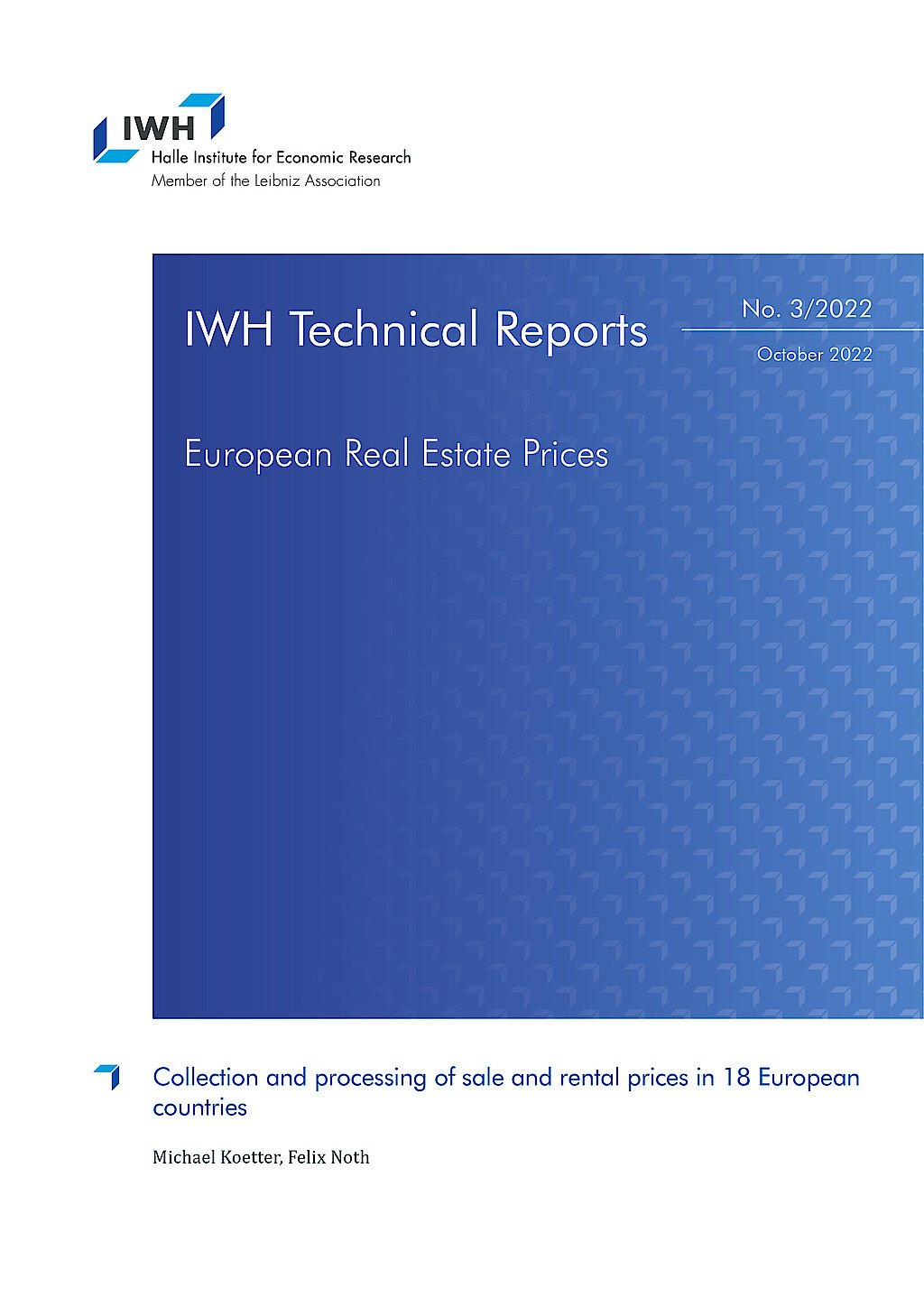Inhalt
Seite 1
MotivationSeite 2
Literature on Pandemics and Real Estate MarketsSeite 3
Empirical Analysis and ResultsSeite 4
Conclusion, References and IWH European Real Estate Index (EREI) Auf einer Seite lesenLiterature on Pandemics and Real Estate Markets
Empirical evidence from an economic history angle is provided by Francke and Korevaar (2021), who analyze the plague in 17th-century Amsterdam and cholera in 19th-century Paris. They find a substantial shortrun effect on house prices in affected areas, whereas effects on rents were lower. The authors further document that the effects were short-lived and that prices in both cities quickly recovered. On the contrary, Ambrus et al. (2020) show that a decline in house price resulting from the cholera epidemic in 19th-century London persisted over longer terms for the directly affected neighborhood. For the 2003 SARS epidemic in Hong Kong, Wong (2008) found limited effects on house prices. In the particular case of Hong Kong, high transaction costs, liquidity constraints, and loss aversion might explain this finding.
Most recently, D’Lima et al. (2022) investigate the effects of the COVID-19 pandemic on house prices in the United States. They find that house prices fell in densely populated areas in times of shutdowns. In contrast, prices rose in areas with fewer populations. On top, both effects become more pronounced for houses with fewer bedrooms. These findings are backed-up by Liu and Su (2021) who show a decline in housing demand in the United States in densely populated areas triggered by the COVID-19 pandemic. Gupta et al. (2021) corroborate these findings by showing that sale and rent prices dropped in city centers and increased in suburban areas in US metropolitan areas due to the COVID-19 pandemic and resulting home office rules. In conclusion, the COVID-19 pandemic and the contagion measures by the government seemed to drive housing demand out of expensive areas, for which the value of amenities declined as well. On top, home office rules weaken incentives to live close to the job. However, Gupta et al. (2021) predict that regional price dynamics might reverse when working from home will flatten again.
Importantly, almost all evidence how the recent pandemic hit real estate markets come from the United States (with the exception of Allen-Coghlan, McQuinn, 2020b, a; Del Giudice et al., 2020). The IWH European Real Estate Index permits more research on the effects and the effectiveness of EU policies.






